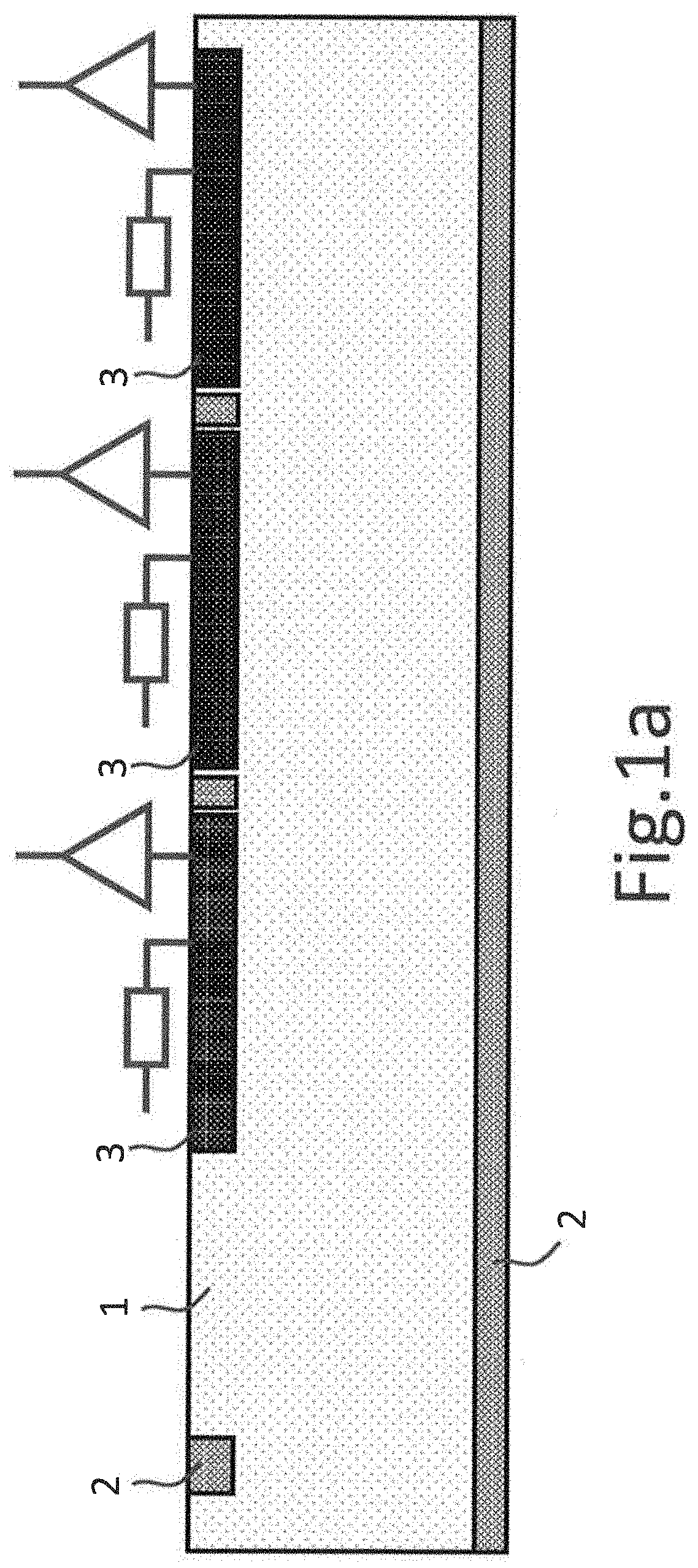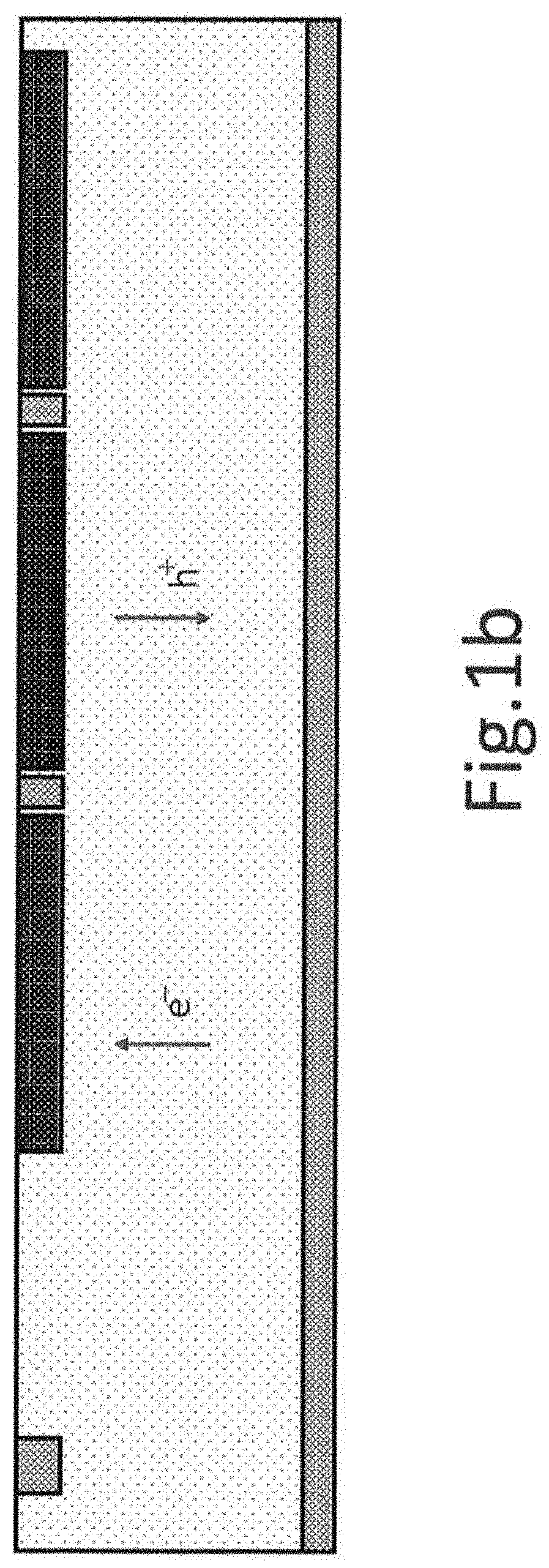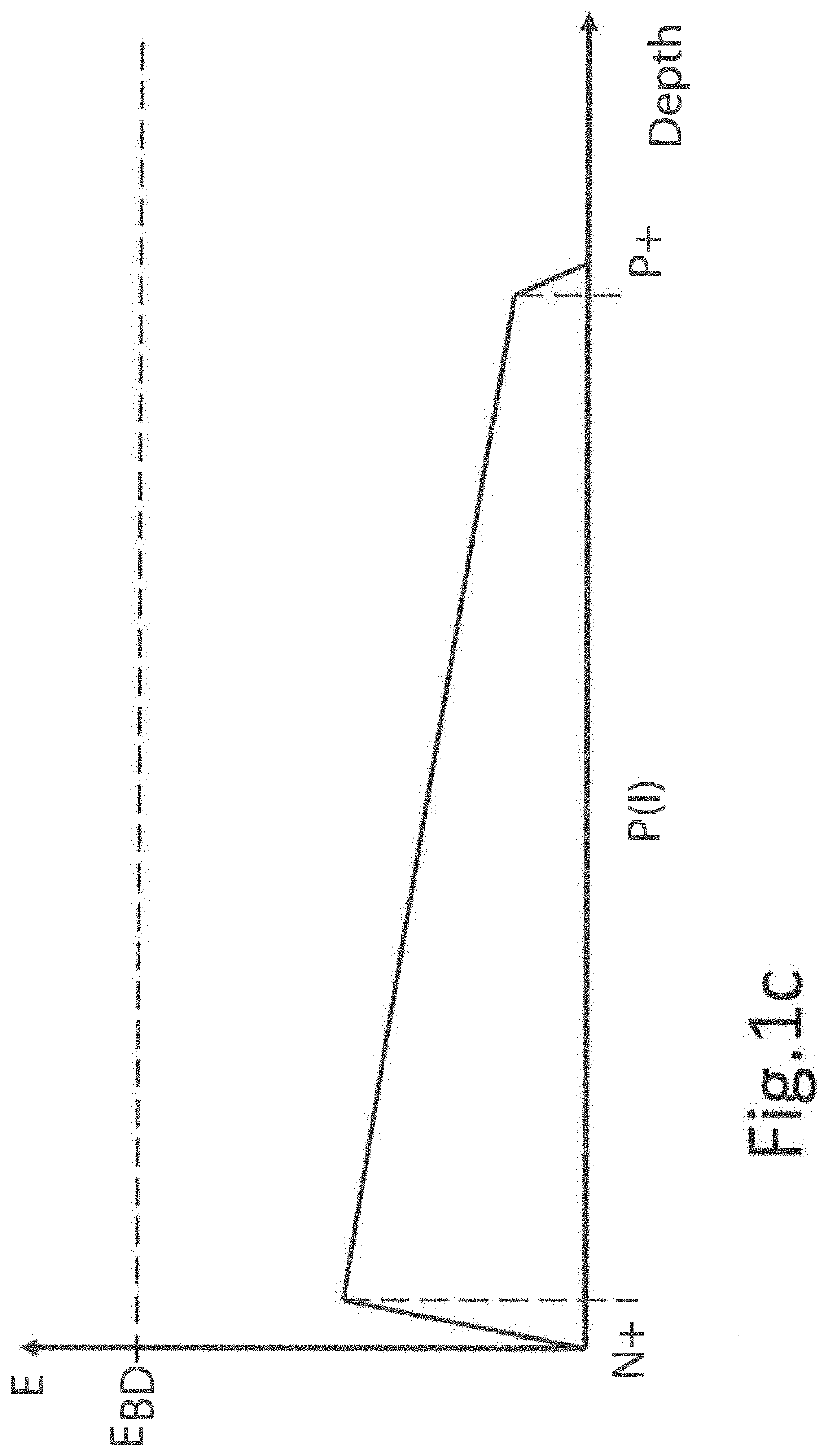Multi-Junction Pico-Avalanche Detector
a detector and pico-avalanche technology, applied in the field of photon detectors, can solve the problems of limiting limiting the space resolution and the performance of front-end electronics, and limiting efficiency, and achieve the effect of exceptional time resolution
- Summary
- Abstract
- Description
- Claims
- Application Information
AI Technical Summary
Benefits of technology
Problems solved by technology
Method used
Image
Examples
Embodiment Construction
lass="d_n">[0052]The present detailed description is intended to illustrate the invention in a non-limitative manner since any feature of an embodiment may be combined with any other feature of a different embodiment in an advantageous manner.
[0053]The sensor of the present invention is illustrated in FIGS. 4A and 4B.
[0054]The sensor structure, which is not a diode, is composed by a lightly p-doped silicon substrate 1, n+ pixels 2 on the top surface and p+ uniform 3 doping on the backside. An additional n-doped, uniform layer 4 is present on the backside, deeper in the bulk than the p+ implant 3, in order to generate a gain region. Therefore, the doping structure of the sensor, from top to bottom, is NPNP. Between the pixel and the gain layer is provided a drift region 6. The inter-pixel p+ implant 7 is optional.
[0055]With this structure, the detector presents the n+ pixels 2 and p+ uniform doped region 3 as end terminals of the current such that upon detection the current signal ge...
PUM
 Login to View More
Login to View More Abstract
Description
Claims
Application Information
 Login to View More
Login to View More - R&D
- Intellectual Property
- Life Sciences
- Materials
- Tech Scout
- Unparalleled Data Quality
- Higher Quality Content
- 60% Fewer Hallucinations
Browse by: Latest US Patents, China's latest patents, Technical Efficacy Thesaurus, Application Domain, Technology Topic, Popular Technical Reports.
© 2025 PatSnap. All rights reserved.Legal|Privacy policy|Modern Slavery Act Transparency Statement|Sitemap|About US| Contact US: help@patsnap.com



